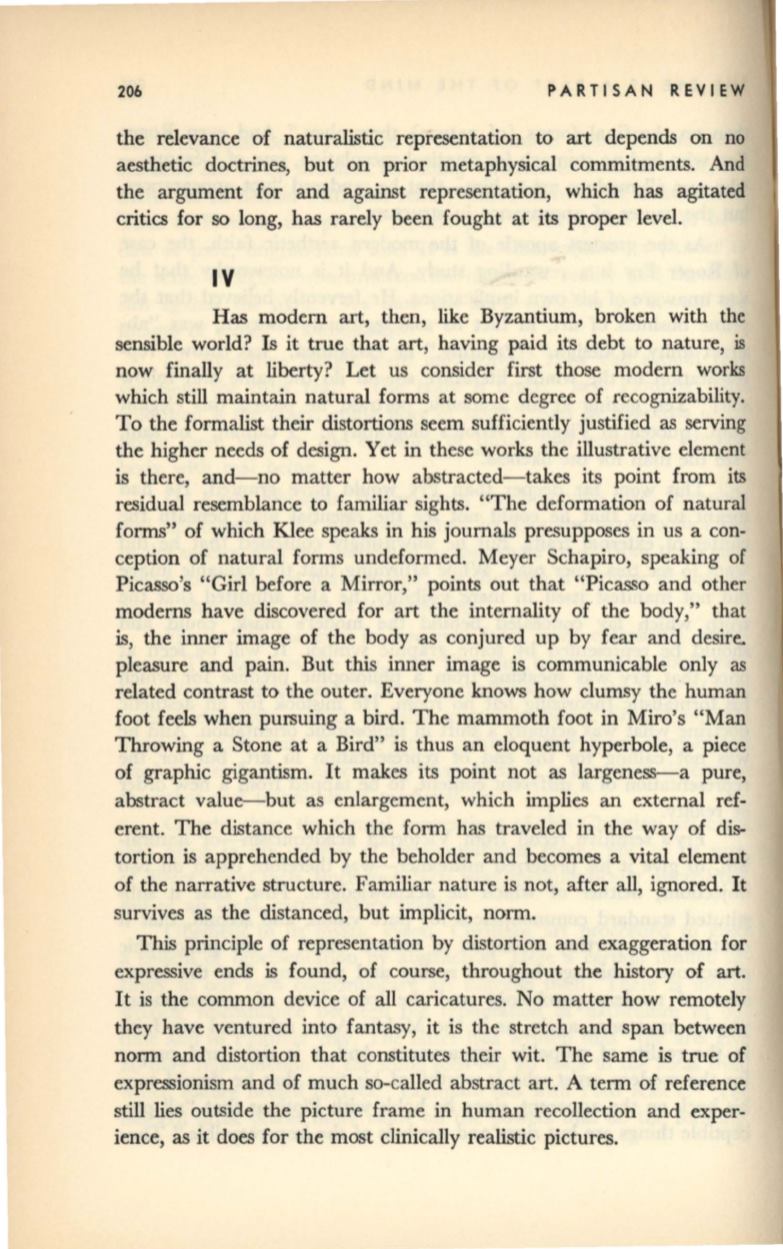
206
PARTISAN REVIEW
the relevance of naturalistic representation to art depends on no
aesthetic doctrines, but on prior metaphysical commitments. And
the argument for and against representation, which has agitated
critics for so long, has rarely been fought at its proper level.
IV
Has modem art, then, like Byzantium, broken with the
sensible world? Is it true that art, having paid its debt to nature,
is
now finally at liberty? Let us consider first those modem works
which still maintain natural forms at some degree of recognizability.
To the formalist their distortions seem sufficiently justified as serving
the higher needs of design. Yet in these works the illustrative element
is there, and-no matter how abstracted-takes its point from its
residual resemblance to familiar sights. "The deformation of natural
forms" of which Klee speaks in his journals presupposes in us a con–
ception of natural forms undeformed. Meyer Schapiro, speaking of
Picasso's "Girl before a Mirror," points out that "Picasso and other
modems have discovered for art the internality of the body," that
is, the inner image of the body ,as conjured up by fear and desire.
pleasure and pain. But this inner image is communicable only as
related contrast to the outer. Everyone knows how clumsy the human
foot feels when pursuing a bird. The mammoth foot in Miro's "Man
Throwing a Stone at a Bird" is thus an eloquent hyperbole, a piece
of graphic gigantism.
It
makes its point not as largeness-a pure,
abstract value-but as enlargement, which implies an external ref–
erent. The distance which the form has traveled in the way of dis–
tortion is apprehended by the beholder and becomes a vital element
of the narrative structure. Familiar nature is not, after all, ignored. It
survives as the distanced, but implicit, norm.
This principle of representation by distortion and exaggeration for
expressive ends is found, of course, throughout the history of art.
It is the common device of all caricatures. No matter how remotely
they have ventured into fantasy, it is the stretch and span between
norm and distortion that constitutes their wit. The same is true of
expressionism and of much so-called abstract art. A term of reference
still lies outside the picture frame in human recollection and exper–
ience, as it does for the most clinically realistic pictures.


